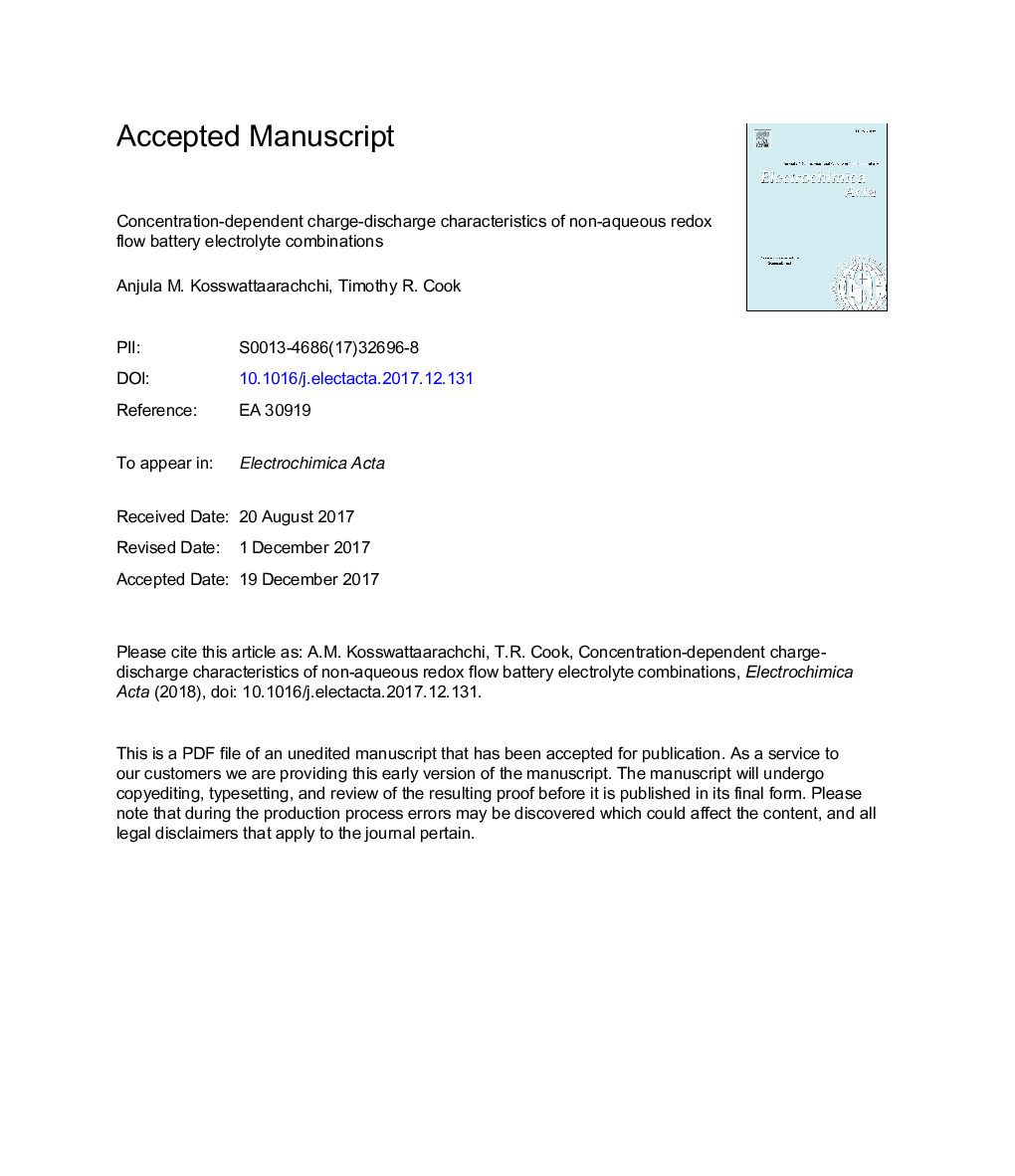| Article ID | Journal | Published Year | Pages | File Type |
|---|---|---|---|---|
| 6604622 | Electrochimica Acta | 2018 | 32 Pages |
Abstract
Non-aqueous redox flow batteries (naRFBs) are promising candidates as high-capacity energy storage devices. Although the wide redox windows associated with the organic solvents used in naRFBs are useful to realize high open circuit voltages, the low solubilities of electrolytes often minimize the energy densities. Strategies have emerged to increase the concentration of active materials employed in naRFBs; however, the dilute conditions typically associated with chronoamperometry and voltammetric experiments are orders of magnitude lower than those found in a working RFB. The electrochemical behavior of non-aqueous electrolytes may differ at high concentrations due to changes in solvation structure, aggregation, solution resistance, and mass transport, which in turn affect the overall cell performance. Accordingly, we studied a series of naRFB systems using ferrocene/TEMPO as a posolyte, and cobaltocenium hexafluorophosphate/N-methylphthalimide as a negolyte, to investigate the effect of concentration on charge-discharge profiles. Cycling studies were performed with four combinations of the above-mentioned catholyte and anolyte materials. Concentration regimes were explored ranging from 10â¯mM to 1â¯M depending on the maximum solubility of a given active species. The results indicate that cycling behaviors are concentration dependent. Coulombic efficiencies and voltage efficiencies are calculated for each system. In addition, it was observed that the specific combination of catholyte/anolyte also affects the charge-discharge profiles and that membrane crossover and fouling is a major contributor to performance losses.
Related Topics
Physical Sciences and Engineering
Chemical Engineering
Chemical Engineering (General)
Authors
Anjula M. Kosswattaarachchi, Timothy R. Cook,
